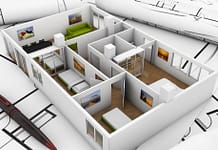With the rise of digital workplaces, new ways of collaborating and working have grown in popularity. Hybrid office design is one such trend that combines different types of workspaces to create a more dynamic and connected team. This workspace combines traditional private offices and collaborative workspaces, like open-plan offices.
Hybrid designs use modular workstations that are easily rearranged as needs change throughout the year. This is a great way to create a more flexible and collaborative workspace. It also allows you to optimize the space for the specific tasks your employees need to complete. Here are five tips for hybrid office designs for your business:
1. Outdoor Spaces
Hybrid workplace designs support both in-person collaboration and remote work. These designs can enable productivity and efficiency. It can also encourage employees to engage with coworkers. This can be done in several ways, from open-plan offices to large-scale areas for team meetings. Outdoor spaces are great for team meetings because they allow people to connect while doing different activities outside of work.
Outdoor spaces have fresh air and light that stimulate energy and creativity throughout the day. They are also great for collaboration because they encourage employee interaction, leading to stronger relationships. This is important because it can lead to more productive work environments that can improve your bottom line
2. Café Seating
Most remote employees prefer working in cafés and coffee shops. This is because they are usually more comfortable to work in than in traditional office spaces. Coffee shops offer the benefits of traditional office space while providing the laid-back environment that employees prefer.
To create a more café-like environment in your office space, you can use modular seating and tables designed for use in cafes. This modular furniture is easy to move around and can be used for any size of workspace. It also helps to create a space conducive to collaboration and creativity.
3. Desking Hubs
Desking hubs are a great way to maximize your space and make it a more dynamic workplace. This workspace allows employees to move freely throughout the office and easily switch between different workstations.
This type of workspace allows you to have a hot desk in every room in the office, which means that there are no fixed desks for each employee. This is a great way to create an open-plan workplace where employees can work on projects and collaborate with other employees anytime.
4. Immersive Meeting Rooms
Meeting rooms are a common feature of any modern office space, but they don’t always have to be boring. An immersive meeting technology is a great way to make your meeting rooms more dynamic. This technology includes virtual reality headsets, motion-capture gloves, and other technologies that allow you to simulate different experiences in the meeting room.
This technology gives employees a truly immersive experience while in the meeting room. It also helps them to visualize concepts better and makes it easier for them to understand complex ideas. This can result in better meetings and more productive discussions.
To make your meeting rooms more exciting and engaging, you can use a combination of technology and interior design to create the ultimate meeting room. For instance, you can utilize video conferencing to interface with far off representatives. This allows face-to-face meetings with employees not in the same physical location as your office space
5. Board Room
Board rooms are a great place to get employees up and to move. It’s designed to encourage collaboration and team spirit by getting employees involved in the design process of their workspace. This style of meeting room is equipped with all the tools and resources necessary that are used for a variety of different tasks, including brainstorming, problem-solving, and setting goals.
The design team will work with you to create a space specific to your company’s needs. They’ll use their expertise and experience to create a space to help you reach your goals faster and more efficiently than ever imagined
Conclusion
Hybrid office design is the perfect combination of modern design and the corporate environment. It creates a space that is both functional and aesthetically pleasing at the same time. This style of office design allows for flexibility, adaptability, and productivity, which is why it’s becoming a popular choice among companies worldwide.








